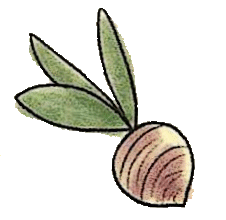Antioxidants
Antioxidants are chemicals that help stop the formation of radicals, or help destroy them. This helps in disease prevention. Because of this, eating vegetables is linked to a decreased incidence of cancer, heart disease, and other illnesses.
Glucosinolates
Glucosinolates are a group of chemicals containing sulphur, found mainly in the cruciferous vegetables (brussel sprouts, broccoli, cabbage and watercress amongst others).
The sulphur gives them the bitter flavour (and, in the case of the brussel sprouts, the nasty small when they are over-cooked).
Gucosinolates can not only provide protection against cancer but are also able to kill cancerous cells . Glucosinolates also have anti-inflammatory and lipid-lowering properties among other things.
Oxalic Acid
Although small amounts of oxalic acid are not harmful, this compound can reduce the absorption of other important nutrients. In some people, it can also increase the risk of kidney stones.
Oxalic acid occurs in lots of foods in small amounts and a few foods in large amounts. Swiss chard has most (700mg per 100g), but spinach (600mg), rhubarb (500mg), cocoa (500mg), beetroot (300mg) and peanuts (150mg) also have a lot. A cup of tea provides 50mg and this source accounts for most of the 150mg of oxalic acid the average person consumes each day. This amount is about a hundredth of a fatal dose.
Oxalic acid can also be made naturally in our body. For example, surplus vitamin C, which the body cannot store, is turned into oxalic acid, and a side effect of taking massive doses of this vitamin may be kidney stones.
Boiling or soaking food can reduce the amount of oxalic acid.
Vitamins and minerals are ubstances needed in small amounts by our body to keep us healthy
(like vitamin A, vitamin C, calcium, and iron)
Vitamin A
Vitamin A is also known as retinol
Main benefits
- helps your body’s natural defense against illness and infection (the immune system)
- helps vision in dim light
- keeping your skin healthy
The main food sources of beta-carotene are yellow, red, and green (leafy) vegetables, such as spinach, carrots, sweet potatoes, and red peppers also yellow fruit, such as mango, papaya, and apricot,
(This is why carrots help you see in the dark. It is not just an ‘old wives’ tale!)
Other sources of vitamin A are: cheese, eggs, oily fish, milk, yogurt, and liver
